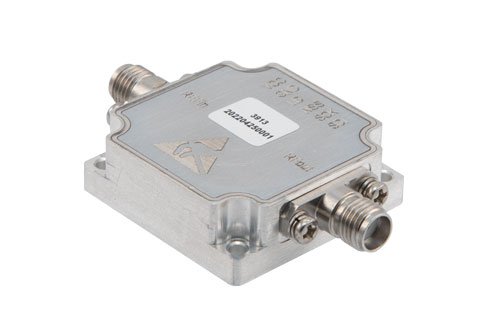 Phase noise is a key specification for RF Frequency Synthesizers and RF Oscillator. Phase noise is often called phase jitter or frequency domain jitter. Jitter is the time domain analog to frequency domain phase noise. The root of phase noise is frequency instability or phase instability in a frequency source. In most RF oscillators, there are design techniques and circuits in place to minimize the phase noise. However, phase noise cannot be eliminated entirely, and has significant repercussions on the performance of RF communications and sensing applications that rely on frequency/phase fidelity.
Phase noise is a key specification for RF Frequency Synthesizers and RF Oscillator. Phase noise is often called phase jitter or frequency domain jitter. Jitter is the time domain analog to frequency domain phase noise. The root of phase noise is frequency instability or phase instability in a frequency source. In most RF oscillators, there are design techniques and circuits in place to minimize the phase noise. However, phase noise cannot be eliminated entirely, and has significant repercussions on the performance of RF communications and sensing applications that rely on frequency/phase fidelity.
An example of the impact of phase noise on wireless communications is with higher order quadrature amplitude modulation (QAM) schemes used in WiFi or 4G/5G cellular telecommunications. Phase noise is a limiting factor on the bit-err0r-rate (BER) or symbol error rate (SER) of these communications. Higher order modulation schemes have lower error vector magnitude (EVM) requirements, where EVM is directly impacted by excessive phase noise. Where amplitude error will add a vertical error to the symboles, phase error leads to a bleeding of the symbols in a circular pattern around the origin. This same phenomenon impacts RF sensing applications, such as radar, where phase error can result in position or velocity sensing error of a target. Another possibility is that phase error may result in two targets appearing as a single target due to the “blurring” of the signature of two nearby targets.
In non-ideal oscillators or other frequency generating components, the phase noise is a smearing of the frequency content of a given frequency around the center frequency of the signal. In the case of an oscillator a single tone should be generated, but in reality, a tone with decaying sidebands extending away from the carrier frequency is the result. In the time domain this would look like several sinewaves nearly overlapping the carrier frequency (tone) but slightly offset in time. The greater the severity of the phase noise the higher the sideband energy compared to the center frequency, in the frequency domain, and in the time domain, the greater the variation in time of the additional sinewaves compared to the center frequency.
During mixing operations, excessive phase noise can lead to distorted/spread mixing products with phase noise, which may even overlap or spread to the desired frequency. In wideband signals, excessive phase noise can lead to spectral regrowth severe enough to result in unacceptable levels of adjacent channel power leakage ratio (ACLR). ACLR is when energy from a signal of one band leaks over to another band in a wireless communication frequency band plan.
Phase noise is generally measured as a small bandwidth difference on either side of the carrier frequency. For instance, the phase noise of an oscillator may be measured over a 1 kHz bandwidth 10 kHz from the carrier frequency or center frequency of the tone. Usually only the positive or upper sideband of the phase noise results are given, this is known as positive single sideband phase noise. There are different contributors to phase noise and ways of describing these contributors. One of the major considerations for phase noise is added phase noise by other elements in the signal path. One way of addressing this is by using components/devices that are specified for low phase noise, such as low phase noise amplifiers (LPNAs).




 Pasternack Blog
Pasternack Blog
